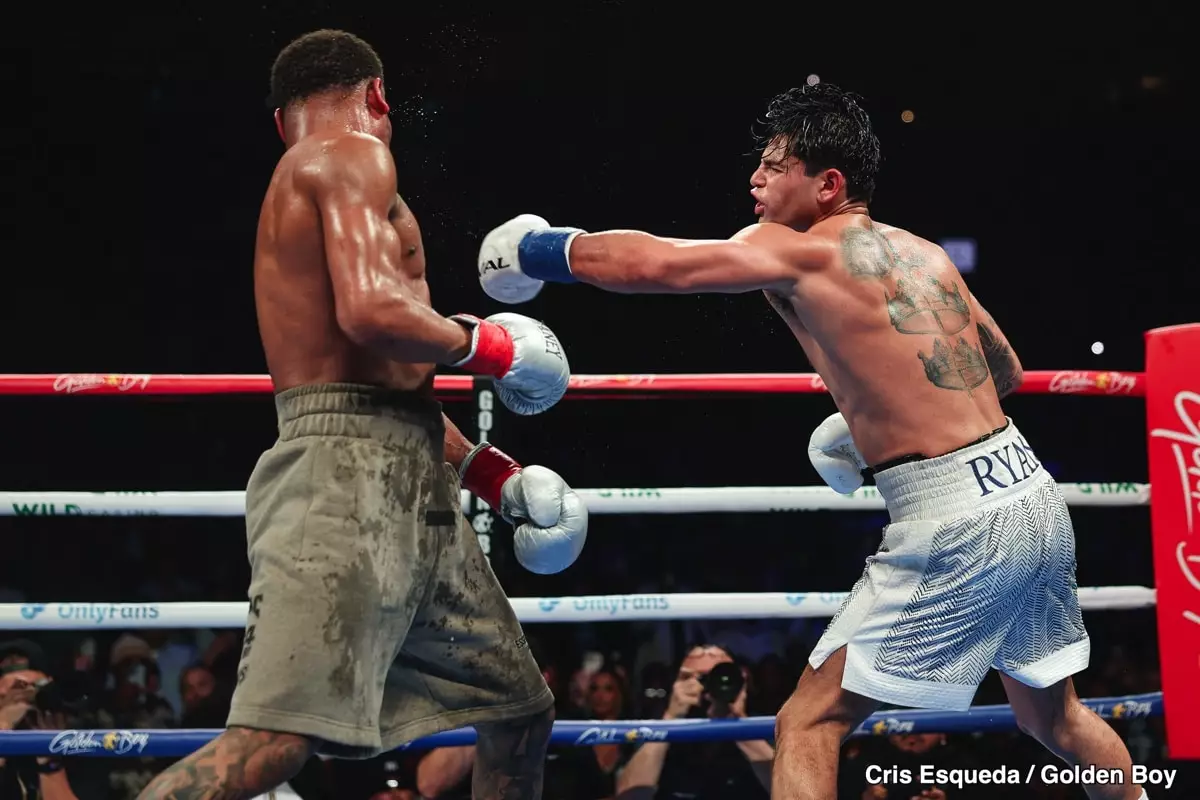In recent developments within the realm of professional boxing, Devin Haney’s lawsuit against Ryan Garcia has sparked significant conversation regarding performance-enhancing drugs (PEDs) and the ramifications of their usage. Eddie Hearn, a well-respected promoter in the sport, has characterized this legal action as a potentially transformative moment. If successful, it could instigate a shift in the behaviors of fighters concerning the use of PEDs, which have long been a stain on the sport’s integrity. However, the repercussions of this lawsuit could extend far beyond the immediate competitors involved, creating a ripple effect that alters the landscape of boxing itself.
At the core of Haney’s lawsuit is the allegation that Garcia’s positive test for Ostarine, a banned substance, constitutes significant wrongdoing. Hearn contends that whether Haney wins or loses in court, the mere act of pursuing legal action could serve as a powerful deterrent. Fighters may fear not just the penalties imposed by athletic commissions but also the potential for civil liability in the event of a positive drug test. This perspective amplifies the stakes involved, possibly dissuading fighters from taking illegal risks that could jeopardize their careers and financial futures.
Of course, there is skepticism surrounding this theory. The lure of immediate financial gain provided by PED usage can be enticing enough to override legal fears. A fighter who successfully elevates their performance through risky means could secure a career-defining victory, offering substantial monetary rewards. The question remains: will Haney’s initiative truly instigate change, or will the lure of quick success continue to motivate some boxers to take the gamble?
Garcia currently faces dire financial consequences stemming from his actions. Beyond the immediate suspension handed down by the New York State Athletic Commission, the ongoing civil suit could impose even greater financial penalties if Haney’s claims are substantiated. For Garcia, who has already experienced a ban, this situation could be characterized as a double jeopardy in the financial sense, further jeopardizing his income as a professional athlete. Loss of a year of earnings, coupled with the potential liabilities of the lawsuit, paints a grim picture for any future bouts.
The implications of this lawsuit transcend personal financial loss as well. Should Haney prevail in court, it could set a precedent for future claims, prompting fighters and promoters to tread very carefully when considering the usage of performance enhancers. The boxing landscape, already fraught with issues of fairness and integrity, might be compelled to reevaluate its operational framework entirely.
Haney’s Career and the Ripple Effect of Litigation
However, while Haney seeks justice through litigation, one must question the long-term impacts this move could have on his career. Boxing is notably a fickle domain where momentum can shift dramatically. Haney, who currently boasts an impressive record (31-0, 15 KOs), finds himself facing a challenging road ahead. The lawsuit consumes his attention and resources, and detractors might see him as a litigant rather than a contender.
Fighters may shy away from competing against Haney, apprehensive over the potential for lawsuits following any losses they incur. It creates an environment where fighters might view their participation in bouts with Haney as a gamble, ultimately narrowing his opportunities for future matches. The delicate balance of competition and legality may deter fighters from entering the ring with him, further complicating his ambitions moving forward.
Addressing Broader Issues: Weight Manipulation in Boxing
While Hearn’s response has painted Haney’s lawsuit as a pivotal countermeasure against PED usage, an equally pressing concern looms over the sport: weight manipulation. Fighters frequently exploit weight classes by undergoing extreme weight cuts and rehydrating massively before fights, leaving their opponents at great risk. The issue is largely overlooked in discussions of athlete safety, yet it is a perilous situation that could lead to serious injury or worse.
The current measures in place to manage weight manipulation are clearly inadequate. In contrast to stringent drug tests for PEDs, the boxing establishment has been slow to address the dangers posed by fighters competing at weights that don’t accurately reflect their physical capabilities. To safeguard the health of the sport and its athletes, the implementation of same-day weigh-ins or additional weight checks could significantly mitigate these dangers.
Devin Haney’s lawsuit against Ryan Garcia may represent more than just personal retribution; it could catalyze significant change within boxing. Yet, as we watch this situation evolve, it’s essential for stakeholders to consider the broader implications for the sport: creating an environment where integrity, safety, and fairness can coexist. Balancing these complex issues will require vigilance and commitment from everyone involved in boxing, ensuring that it can thrive without the shadows of corruption and undue risk hanging overhead. As such, this pivotal moment in boxing history may just be the beginning of a necessary reckoning.

